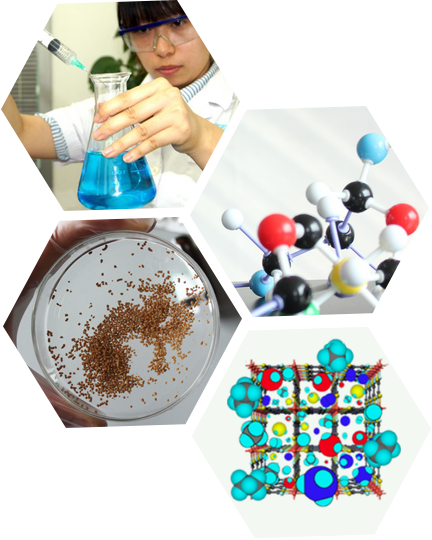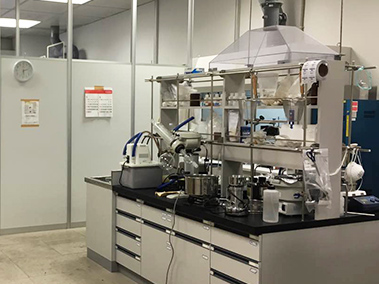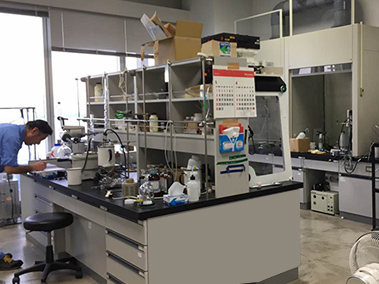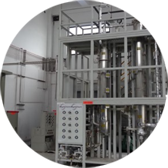Research fields
C1 chemical technology
The R&D team of the HighChem Group continuously optimizes and improves the production process for existing technology to provide advanced technology orientation for the industry and provide high value-added technological route for the owners.
Through cooperation with well-known professors from Japanese universities, HighChem developed low-temperature methanol and new ethanol synthesis routes to provide environmentally friendly chemical production technology for the community. Seeing into the future development of ethylene glycol derivatives, HighChem Technology independently researched and developed coal-based liquid oxygenated fuel (STO) and other technologies.
Catalyst Optimization
HighChem strives to provide efficient and stable catalysts with optimized space-time conversion rate and selectivity for reactions including syngas to ethylene glycol, syngas to methanol catalyst, syngas to ethanol catalyst, methanol to propylene catalyst, and ischer-Tropsch synthesis.
Innovative Application Research
As a substance composed of metal ions and organic matter with a large number of micro-pores, PCP (porous coordination polymer) is expected to be widely used in the gas storage, gas separation, catalyst, sensor, and other fields in the future. Working together with Kyoto University in Japan, HighChem conducted application research and development of PCP materials.
HighChem also participated in the ACCEL research and development project of the Japan Science and Technology Agency (JST) – “Molecular Control Science and Its Application Expansion Based on PCP Nano-space,” and consistently advanced its industrialization research. The idea is to use PCP material to adsorb and separate carbon monoxide and then to develop efficient recovery technology for carbon monoxide, thereby reducing carbon dioxide emissions and promoting the development of C1 chemistry.

R&D Projects Overview
Laboratories & Equipment
HighChem laboratories are equipped with ICP spectrometers, specific surface and pore distribution analyzers, chemical adsorption instruments, gas chromatography and other analytical instrument. In addition, HighChem is capable of conducting small/ pilot scale supporting projects with our catalyst production and characterization equipment and evaluation devices, distillation equipment, hydrogenation micro-reactors, hydrogenation single tubes, carbonylation micro-reactors, STO micro-reactors, and MTP micro-reactors.



Catalyst Testing Equipment
1. Carbonylation micro-reactor evaluation device
The HighChem carbonylation micro-reactor is used in experiments for DMO unit process improvement and verification & screening of palladium-based catalyst performance. The device is composed of MN synthetic tower reaction and carbonylation reaction systems with CO/NO as gaseous input stream. The process and analytical technology of the device are at the forefront of global chemical industry.
2. Hydrogenation single-tube evaluation device
HighChem designed and developed the DMO (dimethyl oxalate) to ethylene glycol single-tube hydrogenation unit. The unit is mainly used to simulate industrial operations for screening and evaluation of catalysts. It also carries out reactions for optimization of EG synthesis and production process. As a device designed for simulating industrialized operation, it is equipped with a circulating hydrogen booster, DMO carburetor, and DMO synthesis reactor to achieve gas recycling. The gas flow is controlled and measured by a mass flowmeter, and the liquid material is measured and controlled by a precision metering pump. The automatic control system uses DCS (distributed control system), and is equipped with a multi-stage key protection system to ensure the safety of the operator and unit equipment.
3. Hydrogenation pilot plant
HighChem collaborated with two industry partners in China (Zhejiang Realsun, and East China Engineering) and constructed a 500 ton/yr ethylene glycol hydrogenation unit for conducting tests on hydrogenation catalyst, reactor side line, hydrogenation simulation training, and hydrogenation optimization process.
Well-established R&D System




R&D Partners





